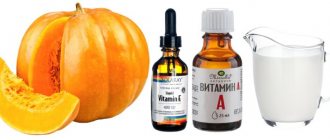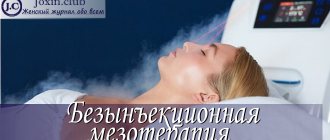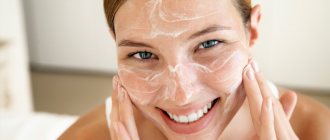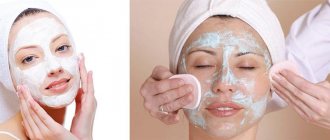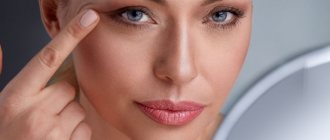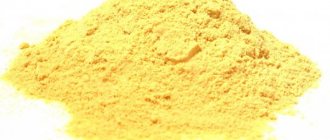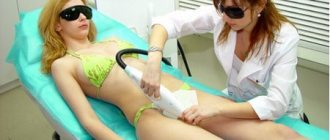What is this procedure?
WARNING : This cosmetic procedure involves the process of administering medicinal injections under the skin to smooth and reduce fine lines and wrinkles. The most popular drug is considered to be an injection based on butolotoxin type A, purified protein.
Today in the beauty industry, the most popular among doctors and patients are:
- "Botox".
- "Xeomin."
- "Dysport".
The action of the injections is based on muscle relaxation, which prevents the occurrence of wrinkles .
The effect is best seen on small muscles responsible for facial expressions, which lose elasticity with age. The principle of action of the drug is to block the transmission of impulses to muscles from nerve endings. The forehead stops wrinkling already in the second week after the procedure, since the skin continues to receive the necessary nutrition, and the muscles are limited in their ability to contract.
Read about the features of using Botox here, and from this article you will learn about exactly how botulinum toxin is used in cosmetology and see photos before and after the procedure.
Scientists have refuted the negative effects of Botox on the brain
Botox injections to smooth out wrinkles were first used back in the 80s of the last century. Since then, this anti-aging procedure has gained incredible popularity.
Aesthetic medicine specialists position Botox as an effective remedy for combating age-related skin changes.
Injections of purified and weakened botulinum toxin have proven themselves to be a “magic wand” that allows you to restore youthful smoothness to your face and forget about expression wrinkles.
However, recently the Internet has literally been “flooded” with publications that the pursuit of beauty and eternal youth can have extremely negative consequences for health.
Moreover, if it was previously stated that the main dangers of Botox injections are psychological addiction to them and the possibility of muscle atrophy, now “armchair experts” have adopted a new “horror story”.
Thus, now visitors to aesthetic medicine clinics are intimidated by the fact that botulinum toxin injections have a destructive effect on the brain, provoking the development of dementia and Alzheimer’s disease, and also reduce cognitive abilities and intelligence.
Botox and Alzheimer's disease: is there a connection?
The reason for allegations of a connection between “beauty injections” and dementia was a study conducted by a group of Italian scientists. It is noteworthy that it was carried out on laboratory mice, and was also short-term.
However, unscrupulous journalists hastened to seize on the “sensation” and present the interim data of Italian specialists as an irrefutable fact - they say that when Botox accumulates in the brain tissue as a result of beauty injections, it destroys them.
At the same time, none of the numerous serious studies of medical botulinum toxin have confirmed the connection between injections and the development of dementia.
To finally debunk this myth, we should recall how medical botulinum toxin “behaves” after it enters the body. For some time it concentrates at the point of intramuscular injection, and then enters the systemic bloodstream.
At the same time, subject to the specified dose, it is not able to cross the blood-brain barrier, and therefore does not cause any systemic effects.
Hemagglutinin and non-hemagglutinin proteins that make up medical botulinum toxin are quickly metabolized, forming simple molecular structures, and then excreted by the kidneys.
The toxin itself interacts with the nerve endings at the injection site, as a result of which the production of the substance acetylcholine, which is responsible for transmitting the nerve impulse to the muscles, stops.
However, the human body is a self-renewing system. After some time, new fibers appear at the blocked nerve ending, as a result of which the synthesis of proteins responsible for the transmission of nerve impulses resumes. Therefore, taking into account the regenerative function of the body, there is no need to talk about any “accumulation” of the drug in the tissues.
Botox and intelligence: do “beauty injections” make you stupid?
Another popular myth associated with botulinum toxin injections is the allegedly extremely negative effect of this drug on intellectual abilities.
Critics of aesthetic medicine claim that people who have received “beauty injections” have significantly reduced mental abilities: they say they perceive spoken language and read text worse, and also begin to suffer from a lack of imagination.
Such “experts” claim that there is some connection between facial activity and the thought process. Thus, in their opinion, it is facial expressions that “activate” cognitive abilities and “trigger” the processing of information by the brain.
The main argument in this case is the fact that most people who solve some complex problem in their minds actually actively work with their facial muscles: they wrinkle their foreheads, purse their lips, etc.
Therefore, as “experts” assure, Botox, by disrupting facial activity, contributes to the fact that a person literally becomes stupid and cannot cope with even the simplest intellectual load.
In fact, of course, all these are conjectures that have nothing to do with reality. If there really was a connection between the activity of facial muscles and intelligence, geniuses and prodigies would have to be classified as monkeys who constantly grimace, and people who are not naturally highly emotional or have excellent control over facial expressions would be classified as fools.
Botox safety: what's the reality?
As noted above, botulinum toxin has been used for medical purposes for almost half a century. Moreover, it is even approved for use in pediatrics - in particular, for the treatment of strabismus.
It is unlikely that specialists would correct a child’s strabismus using this drug, knowing that in the future this is fraught with extremely negative consequences for the brain! Note that in pediatrics, Botox is also used to treat cerebral palsy, spasmodic torticollis, hyperhidrosis, migraine and a number of other diseases.
Therefore, without any doubt, the safety of botulinum toxin injections depends primarily on the quality of the drug used and whether the specialist has the appropriate qualifications.
The main problem today is the presence of a huge amount of counterfeit products on the market.
In an effort to earn as much as possible with minimal expenses on drugs, unscrupulous cosmetologists sometimes purchase very dubious products from distributors who sell them counterfeit goods. Of course, such injections can cause serious complications.
Let us remind you that the qualifications of a specialist are of great importance. Insufficient experience or questionable competence of a cosmetologist can lead to the fact that due to incorrect administration of the drug, the patient will experience facial asymmetry or eyelid ptosis. Therefore, you should only contact trusted professionals for botulinum toxin injections.
Scientists have refuted the negative effects of Botox on the brain
updated:
April 26, 2018
Contraindications and indications
The procedure for administering the drug is not complicated; it requires special training and compliance with the rules . It is necessary to obtain a comprehensive consultation with a doctor and find out about the likely risks or possible contraindications. It is important not to undergo the procedure if there is the slightest risk, since unexpected consequences can distort the appearance for a long time.
The most common contraindications for Botox injections:
- Presence of neuromuscular diseases.
- Postoperative period in case of plastic correction.
- Menstruation.
- The presence of an active form of infectious disease.
- Aggravated periods of chronic diseases.
- Fever or cold.
- Existing allergic reactions to the ingredients of purified protein (you can find out whether there can be an allergy to botulinum toxin and filler and how this is expressed here).
- Taking anticoagulants or antibiotics.
- Oncological diseases.
- Presence of a reaction to the toxin used.
- Hemophilia.
- Lactation or pregnancy period.
- Minor age.
- Presence of tissue scarring.
- Autoimmune diseases.
- Inflammatory processes or pustules present at the site of upcoming injections.
- Myopia.
Watch a video about contraindications for the Botox procedure on the forehead:
Before resorting to injections, you should consult with a specialist and find out about all contraindications so as not to harm the body.
Injections should be done if:
mimic wrinkles appeared in the upper part of the face;- muscles are overstrained;
- horizontal or vertical folds have appeared;
- there is facial asymmetry;
- eyebrows are lowered.
The effect of Botox on the brain: scientific research – Website about nutrition and health
The drug Botox, used to tighten the skin on the face, can cause irreparable harm to health. According to recent studies, its use is dangerous for vision and brain. It turns out that at least 32 people were blinded by Botox in 2012, reports the Daily Mail.
One of the most famous British plastic surgeons, Julian de Silva, says that complications with the use of Botox occur when the gel-like substance accidentally enters the facial artery.
“If Botox gets into the artery that supplies oxygen to the back of the eyes, it can lead to vision loss as well as stroke.
There is a danger that the substance will block the flow of oxygen to the brain,” said a respected British doctor.
According to one study on the dangers of Botox, in 2012 in Britain, 32 people went blind after using it. In at least four patients, this anti-aging drug caused stroke and brain damage. Interestingly, this is not the first data on the side effects that Botox can cause.
It was previously reported that the popular drug reduces human sensitivity. In other words, the limited ability to express emotions on the face, which inevitably occurs after a Botox injection, weakens the connection between the nerves and the brain.
This certainly affects the range of sensations that a person can experience. In addition, for the same reason, Botox prevents a person from feeling happier, because the ability to smile is directly related to our mood.
Doctors complain that Botox manufacturers are silent about the side effects that may occur after injection of the drug.
Anti-aging procedure turns women into idiots
One of the most common rejuvenation procedures, Botox injections, can be very dangerous. According to American scientists from the University of Wisconsin-Madison (USA), Botox smoothes not only wrinkles, but also the convolutions of the brain.
Not only do all emotions disappear from women’s faces after this procedure, but they also cannot express them in words. Moreover, according to the researchers, understanding of spoken text is impaired.
According to study leader David Havas, a speech test was conducted with women before and after Botox injections.
It turned out that after the procedure, the subjects needed more time to formulate thoughts or comprehend the spoken phrases.
Scientists suggest that facial expressions stimulate the thought process. For normal productive functioning of the brain, active activity of facial muscles is necessary, and this is disrupted after injections, reports Ytro.ru.
“Here we can draw an analogy with the influence of motor skills on the development of the human brain in childhood - active use of hands in preschool children stimulates brain activity.
Facial movements can also have an impact on the thinking process,” concludes psychologist An Sotovak (New York).
In addition to such a side effect as dullness, Botox injections have one more thing - they lead to premature aging. This statement was made by dermatologists at the Medical College in New York.
When Botox gets into a muscle, it paralyzes it, but many other muscles are involved in the facial process, and if one of them stops working, the others are activated; As a result, new wrinkles appear, more pronounced.
Meanwhile, recently men have increasingly begun to resort to the services of cosmetologists.
Thus, two years ago, according to the American Society of Plastic Surgeons, 300 thousand representatives of the stronger sex underwent procedures using Botox.
Experts noted that men prefer Botox injections to all other rejuvenation procedures, while women fearlessly go under the surgeon’s knife.
The effect of Botox on the liver. Use of botulinum toxin in medicine
Botulinum toxin began to be used in the 70s. In the 20th century, initially for the treatment of strabismus, and then in aesthetic medicine.
Cosmetic properties were discovered in the 90s by accident when using the toxin on facial lesions. It is used for diseases in which improper (excessive) muscle tension is observed.
The toxin acts only within the muscles into which the injection was given.
Indications for use of botulinum toxin include:
- spasm of the eyelids;
- facial spasm;
- curvature of the neck;
- headaches caused by excessive tension in the muscles of the skull;
- strabismus;
- achalasia of the esophagus;
- clubfoot;
- lesions after a stroke;
- autonomic disorders such as hyperhidrosis (a toxin inhibits sweat production);
- aesthetic medicine - reduction of expression lines.
Botox (the so-called drug containing botulinum toxin) is administered by injection. Under its action, the muscles relax, which prevents the formation of skin folds - wrinkles are smoothed out. The procedure is used in the case of facial wrinkles (they can occur even in young people).
Thus, it removes wrinkles between the eyebrows, around the eyes, and transverse wrinkles on the forehead. Botox injections do not affect the shape of the face in any way (Botox is not a filler). The procedure can be combined with the introduction of hyaluronic acid or laser rejuvenation. The effect of the injected Botox appears after a few days and lasts for about 6 months.
Botox is also used to prevent the appearance of facial wrinkles.
Is Botox on the forehead harmful? Patient opinions
“I got Botox injected into my forehead three weeks ago. Then there was horror - the headaches did not stop for 2 weeks, on the third day terrible swelling appeared under the eyes, now only the puffy upper eyelids remain, I look scary in the photo.
Only now have I read negative reviews about a specialist whom I trusted - it turns out that he uses uncertified drugs! He didn’t show me anything personally, he just turned around with a filled syringe.
I’m in deep shock, now I’ll choose more carefully who to go to.”
“I had Botox injections on my forehead, under my eyes and on the bridge of my nose. In general, everything went well, but then for a week there were negative consequences: I had a headache, felt sick, and it was difficult to lift my eyelids. In addition, my already poor vision dropped (it was -3, but it got even worse). Although I read reviews that injections increase myopia, I didn’t believe it, I thought it would work out.”
Inna Presnyakova, St. Petersburg.
“Ever since I was young, I have had the problem of wrinkles on my forehead. I began to notice that this only intensified with age - I decided to get a Botox injection.
I took a protein test, received a negative result, the doctor clearly identified the places where she would inject, and administered a small amount of anesthesia.
Everything went well, without pain, there were no complications later, only it became impossible to frown. Unusual, beautiful."
Maria, Nizhny Novgorod.
“I didn’t have any reaction to Botulinum toxin on my face at all. The doctor said that there are only three percent of such people, and this is due to the large number of antibodies to the toxin that the human body produces. I was very surprised, it’s a pity for the money spent, but I’ll have to find another way of rejuvenation.”
Kristina, Moscow region.
“When I first injected Botulinum toxin, the effect lasted for about three months, but for my friend, with whom we injected together on the same day and with the same specialist, it lasted only one month. I think this has to do with individual characteristics. The area between my eyebrows, for example, lasted much longer than the area around my eyes and eyebrows.”
“I had a Botox injection around the eyes and forehead - everything looks great. But when I laugh, it turns out that the upper part of my face remains motionless, and all the wrinkles accumulate on my nose! They simply moved from one part to another. Now I try to strain my face less in general. They say it will go away with time."
“I was injected with 30 units: Botox in the forehead - 22, and 8 in the eye area (for prevention).
On the fourth day, having read all sorts of negative reviews, I was afraid to wake up with a downcast face or some other innovation, but this did not happen.
Everything went quite smoothly and comfortably, it looked normal. The entire effect disappeared in the fifth month. In general, I’m very pleased, I especially looked good in the photos.”
Botox and antidepressants. Why is there a ban?
Cosmetologists warn their clients that Botox and antibiotics are not compatible. But doctors do not always explain why there is a ban, so some people think that the contraindication is unfounded.
Botox is a drug based on botulinum toxin type A. The drug belongs to the group of muscle relaxants, that is, it relaxes the muscles because it blocks its connection with the nervous system. The drug is injected into the muscle, which must be temporarily paralyzed in order to get rid of facial wrinkles.
Antibiotics are antibacterial drugs that either inhibit the activity of pathogens or kill them. They are used when the immune system is not able to cope with the disease on its own.
Weakened immunity is one of the contraindications to botulinum therapy. Botox is a toxin, poison, albeit in small dosages. Only a healthy person whose immune system works like a clock can cope with it without consequences.
Some antibiotics negatively affect kidney function. Namely, it is through them that Botox is removed from the body. It is believed that it stops working when the muscles return to activity, that is, 4-6 months after the procedure. But the drug itself is excreted by the kidneys earlier - 2-3 weeks after the session. A person observes only the residual effect of the drug.
In this regard, antibiotics can enhance the effect of the toxin. Even if the doctor has selected the correct dosage, complications may arise. They affect appearance and health, so you will have to spend a lot of time and money to eliminate the consequences.
Some antibiotics, on the contrary, weaken the effect of the neurotoxin. Even by the end of the second week after the session, when the result should appear, it is not there. There are no complications, but it turns out that the money was wasted.
Botox consequences. What reasons can cause side effects?
The most common causes of complications after the Botox procedure are considered to be medical errors.
The consequences of using Botox are conditionally divided into 3 groups, depending on the root cause of their occurrence:
- Unqualified actions of a specialist/doctor.
- Ignoring compliance with special rules by the patient himself.
- Individual reaction of the body to botulinum toxin.
What mistakes can a doctor make?
The most common causes of complications after the Botox procedure are considered to be medical errors. They are:
- injection of the drug into inappropriate areas of the face that respond inadequately to the process of complete relaxation, resulting in asymmetry of the oval and contours;
- deviations in the choice of the correct dosage, that is, with a smaller amount of botulinum toxin administered, there will be no visible effects from the manipulation, while a slight excess of the dose can turn the face into a motionless mask;
- ignorance or ignoring the rules for subcutaneous/muscular diffusion, which can provoke migration of the drug to neighboring facial tissues, leading to their ptosis (drooping). There are known cases of local accumulation of the active substance under the skin in the eye area, which leads to swelling and local overdose;
- incompetence of the specialist who carried out the procedure with gross violations, which may result in: drooping of the upper eyelid, distortion of facial expressions and facial expressions, drying of the mucous membrane of the eyes due to impaired blinking, bags in the eye area, swelling of the face, asymmetric changes in proportions, paralysis of the circular muscles of the oral area leading to difficulties while eating;
- failure to comply with the temperature conditions of storage of the drug, leading to the loss of its basic properties.
Advantages and disadvantages
The procedure is simple, but unwanted effects may occur . The reasons for the occurrence of negative consequences may depend on the quality of the drugs used, qualifications or accidental errors during the injection process, and the body’s special reaction to the composition of the drug.
Why is it worth doing?
Successful forehead Botox has a long-lasting effect of smoothing the skin in the injection area. The success of the procedure can most likely be judged no earlier than a week after the injections (we talked about how many days after the results are visible here).
In the first days, marks may be noticeable at the skin puncture sites or insufficient uniformity of distribution of the injected product. But after a few days they will become invisible.
If the outcome is positive, the benefits of forehead Botox:
- The very next day after the procedure, a significant smoothing of existing wrinkles will become noticeable.
- Horizontal folds on the forehead are less deep or may disappear altogether.
- When using various facial expressions, the forehead remains motionless, new wrinkles do not form, since the substance has paralyzed the muscles.
- The overall appearance of the face becomes more youthful and fresh.
- There is no mask effect on the face, the eyebrows are as mobile as before.
Possible complications
If any difficulties arise or the Botox was done poorly, defects may occur:
- As a result of frequent manipulations using injections, blood circulation in the forehead area can be disrupted, causing paralysis of muscle fibers.
- The appearance of neoplasms and tumors at injection sites.
- Dry skin.
- Swelling of the lymph nodes.
- Decreased tone of the forehead muscles.
- Loss of facial expression in the eyebrows and brow ridges.
- Swelling at injection sites.
Which is better - Botox or Dysport? Which drug to choose for rejuvenation?
Women try to maintain an attractive appearance and youth for as long as possible, and modern cosmetology does its best to help them with this. Nowadays, botulinum toxin injections occupy a leading position among effective means of rejuvenation, and the list of the most commonly used of them includes Dysport and Botox. Each of the drugs is widely used in cosmetology. So which is better - Botox or Dysport? Which drug to choose for rejuvenation?
"Botox"
This remedy was released in its pure form in 1950. Since that time, the drug has been subjected to clinical trials many times, during which the cosmetological capabilities of this botulinum toxin were studied. As a result of such studies, it was noted that under its influence blepharospasm is eliminated. In this regard, the drug began to be used in ophthalmology.
In 1989, an American pharmaceutical company produced and commercialized botulinum toxin for medical use, and the name of this botulinum toxin is “Botox”.
One of the first to use the drug in his practice was Jean Carruthers, an ophthalmologist, thanks to whom the interest of the general public (primarily the female half) in this remedy was awakened. The doctor noticed that thanks to Botox, facial wrinkles are smoothed out, as a result of which the patients’ skin takes on a more youthful and fresh appearance.
Pharmacies are hiding a cheap anti-wrinkle trick! -15 years instantly, if green...
Rotaru admitted why at 68 years old she has no wrinkles! It turns out the singer...
Today this drug is being released.
"Dysport"
This drug is, one might say, a plagiarism of Botox, and it contains botulinum toxin of the same type - A. The mechanism of action of these drugs is practically no different.
Botulinum toxin has the ability to block the release of acetylcholine, resulting in a temporary muscle spasm. Due to immobilization, facial muscles practically lose their ability to contract, due to which facial wrinkles are eliminated, albeit temporarily. When the effect of botulinum toxin ends, the muscles begin to contract again, and wrinkles return along with this ability.
The production of “Dysport” is carried out by the famous French company, and it was first introduced to the world in 1990. This drug is one of the worthy competitors of Botox, which today, by the way, is used for mesobotox injections under the eyes.
The effectiveness of the product is quite high, and is in no way inferior to the effectiveness of its original. At the same time, the cost of the drug is at least 10% lower, which is very impressive, considering the cost of these funds. Many experts in the world of cosmetology believe that Dysport, due to these circumstances, may eventually push Botox out of the market, at least if its American manufacturers do not reconsider their pricing policy.
What is the difference between Botox and Dysport?
The drugs have similar effects, but are there any differences between them in other aspects?
So, “Dysport” and “Botox”: what is the difference, and what are the similarities of the products?
- According to patient reviews and doctors' observations, the effect of Dysport appears several days faster than the effect of Botox - approximately 4-7 days. This is very convenient for those who need to eliminate flaws in their appearance as quickly as possible. In addition, it is believed that its effect lasts longer for several weeks, although this issue is controversial, since there is a contrary opinion from patients and specialists on this matter. But these assumptions have not been proven by clinical studies. In addition, the effect itself does not differ from both botulinum oxins at the time of its full manifestation - approximately two weeks after the injections;
- Experts say that the product from French manufacturers has a slightly greater diffusion ability than its American counterpart. On the one hand, this can be attributed to the disadvantages of the drug, because due to this ability it affects neighboring muscles for which it is not used. On the other hand, a high level of diffusion in the hands of a skilled specialist can result in a huge advantage of the product, since thanks to it it is possible to obtain a significant cosmetic effect. If, depending on this criterion, we determine what is better for the face - “Dysport” or “Botox”, then we can say that “Dysport” can be used for the bridge of the nose and forehead, while for eyebrows and eliminating wrinkles around the eyes it is better to use “Botox” ";
- Among the disadvantages of Dysport compared to Botox is its lower content of the main active ingredient - botulinum toxin itself. However, this can be an advantage if the product is used for delicate, sensitive areas - the area around the eyes, under the eyes, eyebrows. But in some cases it is more advisable to use Botox, because for some areas you will have to use a much larger dose of Dysport, while much less of the American would be needed.
Truth or rumors?
They have repeatedly stated that Dysport stimulates the production of antibodies that neutralize the effects of the main component of the drug, thereby negating its effect. Some experts defend this remedy, on the contrary, saying that it is Botox that provokes such a reaction in the body. It is possible that these mutual accusations are part of the marketing strategy of the cosmetics market giants. In fact, both drugs have such an effect, but only when using a large amount of them - more than 200 units. means, while 20-60 units are usually enough to eliminate wrinkles.
Otherwise, the properties, indications, contraindications, and side effects from the use of both drugs are identical.
The main indication for the use of both Dysport and Botox is expression lines.
Contraindications to the use of botulinum toxins
They are:
- Inflammatory process in the treated area;
- Infectious diseases occurring in the body;
- Increased body temperature;
- Allergy to the main substance contained in the drugs and its auxiliary components;
- Dermatological diseases at the site of botulinum toxin injection;
- Myasthenia;
- Pregnancy, breastfeeding;
- Glaucoma;
- Blood diseases in which blood clotting is impaired;
- Use of antibacterial medications.
Possible side effects from using Botox and Dysport
If we talk about Botox or Dysport - which is better for wrinkles, you should also take into account the possible side effects from using both of them.
They are the same for both means:
- Swelling around the treated area;
- The appearance of asymmetry on the face;
- Ptosis (drooping of the upper eyelids);
- Sagging skin in the treated area of skin;
- The appearance of redness, itching, rash;
- Allergy;
- Formation of bruises;
- Headache;
- If botulinum toxins are used to eliminate wrinkles around the mouth (for example, purse-string wrinkles or nasolabial wrinkles), problems with eating may arise.
As a rule, these side effects go away on their own, without medical intervention. But in some cases, side effects can persist for a long time, and this happens most often for the following reasons:
- Incompetence of the doctor who performed the procedure;
- Low quality of the drug used;
- Failure of the patient to comply with the specialist’s recommendations regarding the preparation and rehabilitation period before and after injections.
What to inject: Botox or Dysport?
So, "French" or "American"? It is worth saying that both means are equally trustworthy.
When choosing, you should consider the following factors:
- Which area of the skin is planned to be affected? If these are small sensitive areas, then it is better to go with Dysport; in other cases, Botox may be more appropriate;
- Exposure time and duration of effect retention. If you need to see the result in the coming days, it is better to choose Dysport;
- Price. The French drug is cheaper, and if there is no fundamental difference, according to other criteria, then it is quite possible to stick with it.
You only need to choose the most suitable drug together with a cosmetologist. By the way, a cosmetologist also needs to be selected carefully. Experts say that special attention should be paid to the experience and qualifications of the doctor if you plan to use Dysport - it requires more skill from a specialist in order to be correctly distributed in the tissues without causing persistent side effects.
Today, an alternative to Botox and Dysport is Xeomin, which is also confidently gaining popularity, but so far most often the choice is in front of the first two products.
Features of wrinkle correction
Botox on the forehead is done by both women and men who want to get rid of annoying wrinkles caused by excessive emotionality. Unlike the area under the eyes or around the mouth, visible wrinkles on the forehead cannot be eliminated using alternative methods such as contouring with hyaluronic acid.
With the introduction of Botox, it is easy to remove both horizontal and vertical wrinkles , thereby returning the desired appearance. Carrying out the procedure in different parts of the face is generally similar, the only difference is in the number of units of the substance administered.
Attention! The drug should be injected specifically into the muscle tissue, and not into the wrinkle that has formed on the upper part of the face.
Injection plastic surgery should be performed no more than 2-3 times a year . The full course of combating unwanted skin imperfections is 3-4 years with breaks of 6 months - after restoration of previous muscle activity by 50%.
Paralyzed beauty
The worst thing is that, as a rule, clients repeat injections from time to time, since botulinum toxin paralyzes the muscles only for two to three months. The question arises: do repeated courses of treatment of wrinkles with Botox really lead to irreversible changes in the brain?
With such a “new” face, Meg Ryan appeared at the 2016 Tony Awards. The actress did not skimp on Botox, fillers and other modern means of achieving beauty.
Botox is the trade name for botulinum toxin, one of the most famous deadly poisons. This neurotoxin is produced by the Clostridium bacterium, a spore that is often found in plants, soil, water and animals. Clinical botulism syndrome, which is fatal in most cases, usually develops in infected wounds or from eating poorly processed or spoiled canned food. This toxin paralyzes muscles by blocking the release of acetylcholine, the main neurotransmitter within neuromuscular junctions.
The human brain is constantly undergoing various processes, which means that its cycles and microscopic anatomy are subject to change. They can physically change in response to a number of factors. For example, violinists have a more developed brain map for finger movements than non-violinists. In blind people learning Braille, the cortical “finger reading” zone is more developed, in contrast to the unused areas of the cerebral cortex responsible for vision.
At one of the star events, Nicole Kidman, known for her addiction to Botox, carefully obscured part of her face with her hair. What does she have to hide?
What effect does the drug have?
Most often, patients aged 35 to 55 years apply for injections of the drug. The table shows an approximate division into age groups that are most likely to have certain indications for Botox.
| Age category, years | Before | After |
| From 18 to 27 | Minor horizontal, rarely vertical wrinkles. | Complete elimination of wrinkles. If there are deeper ones, then they become almost invisible. |
| From 27 to 40 | There are visible traces of wrinkles and folds. Shallow horizontal and vertical wrinkles between the eyebrows, which become more expressive when using appropriate facial expressions. | Fine wrinkles are eliminated, leaving light traces of deeper horizontal folds. Vertical eyebrow wrinkles are almost always eliminated without leaving any traces. |
| From 40 to 50 | Most often, longitudinal wrinkles on the forehead are already clearly defined and can be seen even in a relaxed state. | The skin of the forehead is smoothed out, but traces of deep wrinkles are clearly visible. Some wrinkles are not completely eliminated. |
| From 50 to 65 | There are all kinds of wrinkles, some of them are already very deep. There is a dense network of small wrinkles over the entire area of the forehead. | Fine wrinkles are eliminated and deeper ones are smoothed out, but the forehead skin is not completely straightened. |
Photo
You can see what the face looks like before and after botulinum toxin injections in the forehead in the photo below.
How many units of the drug are needed?
At the first consultation, the cosmetologist determines how many units of the drug should be administered. Based on the individual characteristics of the patient, her skin type, depth and severity of wrinkles, the dosage ranges from 10 to 30 units of serum. Even an experienced specialist can prescribe the dose of Botox incorrectly , so another appointment with the doctor is required after 1-2 weeks.
If the patient suffered from botulism, then his body has developed antibodies to botuloxin, and the drug, when introduced into the body, does not act, which prevents the effect from appearing.
Where and at what price is the service provided?
Not every salon can provide services, but only those that have a license for surgical and therapeutic cosmetology. The procedure is carried out in a specially equipped room that meets all sanitary standards. The patient has the right to request a certificate of conformity of the drug and documents authorizing its use.
The average cost of Botox in Moscow and St. Petersburg varies from 200 to 400 rubles per unit. If the price is lower, you should think about the quality of the drug and the qualifications of the specialist. You cannot skimp on beauty and health.
How is the procedure performed?
First consultation. The doctor determines the required amount of the drug and talks about possible side effects.- The patient should not drink alcohol or antibiotics the day before the injections. It is also undesirable to smoke or drink strong tea or coffee on the day of the procedure.
- The doctor cleans and disinfects the treated area.
- The patient is asked to frown and raise their eyebrows to mark the areas where Botox will be injected.
- An anesthetic cream is applied to the injection areas to avoid discomfort.
- With a thin needle, the drug is injected under the skin to a depth of approximately 7 mm.
- Ice is applied to the treated area.
You can clearly see how Botox is administered in the video:
The effect of Botox on the brain. Study: Botox damages the brain and robs you of happiness
The drug Botox, used to tighten the skin on the face, can cause irreparable harm to health. According to recent studies, its use is dangerous for vision and brain. It turns out that at least 32 people were blinded by Botox in 2012, reports the Daily Mail.
One of the most famous British plastic surgeons, Julian de Silva, says that complications with the use of Botox occur when the gel-like substance accidentally enters the facial artery.
“If Botox gets into the artery that supplies oxygen to the back of the eyes, it can lead to vision loss as well as stroke.
There is a danger that the substance will block the flow of oxygen to the brain,” said a respected British doctor.
According to one study on the dangers of Botox, in 2012 in Britain, 32 people went blind after using it. In at least four patients, this anti-aging drug caused stroke and brain damage. Interestingly, this is not the first data on the side effects that Botox can cause.
It was previously reported that the popular drug reduces human sensitivity. In other words, the limited ability to express emotions on the face, which inevitably occurs after a Botox injection, weakens the connection between the nerves and the brain.
This certainly affects the range of sensations that a person can experience. In addition, for the same reason, Botox prevents a person from feeling happier, because the ability to smile is directly related to our mood.
Doctors complain that Botox manufacturers are silent about the side effects that may occur after injection of the drug.
Why is Botox dangerous? Procedure
It is believed that in order to reduce the side effects of Botox to zero, it is enough to fall into the hands of a skilled doctor. In principle, everything is so. The procedure for administering the drug itself takes very little time, about half an hour. A little more if the scope of work is wide. However, the preparation can be much longer.
The doctor needs to carefully examine his patient's face. At the same time, he is usually asked to frown, smile, and grimace in different ways so that all the folds are clearly visible. The specialist immediately marks the places where he plans to inject. Then he needs to calculate the amount of the drug and take into account all the details of its administration: depth, speed, etc.
Is it possible to inject the drug at home?
Some women prefer to take care of their face at home. It is strictly forbidden to inject Botox yourself - the procedure should only be carried out by a certified specialist. At home, it is possible to use non-injection methods to maintain youth.
Homemade cosmetics are prepared using natural ingredients, but are significantly inferior in effectiveness to injection plastic surgery. One of the most popular skin care methods at home is a cream with a Botox effect. It refreshes the face and helps prevent the appearance of the first wrinkles.
You can replace beauty injections with appropriate masks and lotions , which extremely rarely cause negative consequences and allergic reactions.
What to do if the procedure was unsuccessful?
| No. | Cause | Consequences |
| 1 | Large dose of the drug | It has a strong effect on the facial muscles, causing paralysis. Reduced activity of the forehead muscles can lead to increased activity of others, causing wrinkles to appear in their area. |
| 2 | Incorrect injection site | May lead to swelling and sagging muscles. If the needle hits a blood vessel, it will rupture and release a small amount of blood. There will be no significant harm to health, but there will be bruises or bruises. |
| 3 | Frequent use of the drug | It can lead to partial or complete muscle atrophy, causing drooping of the facial contour and the appearance of a frozen expression on the face. |
If a tragedy does occur, it is necessary to look for recovery methods . Massage helps to stimulate muscles and skin, improve blood circulation. This helps the bruising and swelling disappear. An experienced physiotherapist will be able to assess the situation and recommend physiotherapy treatments.
Consequences after Botox: what doctors are silent about, side effects from the procedure
Do you want to experience the effects of Botox injections, but are you afraid of the consequences and complications? Have you heard a lot of scary information about the terrible side effects of this procedure? Do you want to know all the details that clinic specialists keep silent for advertising purposes? We will tell you the most interesting information on this hot topic.
What is Botox
Botox injections are prescribed only after a thorough examination of the body.
A drug called Botox consists of botulinum toxin A, obtained from the anaerobic bacteria Clostridium botulinum.
It is a nerve poison that causes paralysis of muscle tissue when it penetrates into its structure, but due to low concentrations it is not capable of causing harm to health.
As a result of such actions, the muscle and the surrounding surface of the skin completely relax, which leads to the effect of smoothing and disappearing wrinkles.
Over the course of several months, this toxin is completely eliminated from the patient’s body naturally, and neuromuscular connections are restored.
Botox injections are prescribed only after a thorough examination of the body in order to identify all the patient’s contraindications. In addition, a competent specialist must correctly assess the initial state of the facial muscles in order to exclude the possibility of immobility in certain areas of the face.
The skin surface requiring correction must be pre-treated with an antiseptic solution, as well as local anesthetics (if necessary). After the procedure is completed, the patient can return to his work duties and lead a normal lifestyle.
What are the contraindications for use?
If such a procedure is performed by a qualified specialist who has the necessary knowledge and solid experience, there are usually no side effects.
However, there are cases of serious complications caused by many factors.
The doctor is obliged to warn his patient about the list of contraindications to the use of Botox in order to avoid dangerous consequences and significant side effects. This list includes a ban on the procedure in the following cases:
- pregnancy and breastfeeding;
- glaucoma diseases;
- the presence of infectious diseases in the body;
- the presence of immunological disorders;
- individual intolerance to botulinum toxin and tendency to allergic reactions;
- the presence of dermatitis and other diseases of the epidermis;
- increased body temperature;
- presence of diseases of the hematopoietic system;
- taking antibiotics and anticoagulants;
- the presence of oncological processes in the body;
- epilepsy diseases;
- the presence of foci of inflammation in the area of manipulation;
- atony of the facial muscles (age-related weakening of muscle tissue);
- weakened immune system of the body.
At the age of 45 - 50 years, many women experience atony of the facial muscles, associated with age-related loss of muscle strength, so additional administration of Botox in this case will lead to even greater weakening, as well as sagging due to paralysis.
The drug Botox has been in the service of medicine for many years, during which it has repeatedly undergone thorough testing and clinical studies for possible complications. During these experiments, the following facts were established:
- Botulinum toxin used for injections is used in very small dosages, and therefore is not capable of causing botulism;
- in the case of an individual allergic reaction - intolerance to the drug, a rejection reaction may occur, requiring therapeutic manipulation;
- In a large number of cases, after using Botox, the following were observed: skin redness, swelling, and inflammatory reactions.
What reasons can cause side effects?
The most common causes of complications after the Botox procedure are considered to be medical errors.
The consequences of using Botox are conditionally divided into 3 groups, depending on the root cause of their occurrence:
- Unqualified actions of a specialist/doctor.
- Ignoring compliance with special rules by the patient himself.
- Individual reaction of the body to botulinum toxin.
What mistakes can a doctor make?
The most common causes of complications after the Botox procedure are considered to be medical errors. They are:
- injection of the drug into inappropriate areas of the face that respond inadequately to the process of complete relaxation, resulting in asymmetry of the oval and contours;
- deviations in the choice of the correct dosage, that is, with a smaller amount of botulinum toxin administered, there will be no visible effects from the manipulation, while a slight excess of the dose can turn the face into a motionless mask;
- ignorance or ignoring the rules for subcutaneous/muscular diffusion, which can provoke migration of the drug to neighboring facial tissues, leading to their ptosis (drooping). There are known cases of local accumulation of the active substance under the skin in the eye area, which leads to swelling and local overdose;
- incompetence of the specialist who carried out the procedure with gross violations, which may result in: drooping of the upper eyelid, distortion of facial expressions and facial expressions, drying of the mucous membrane of the eyes due to impaired blinking, bags in the eye area, swelling of the face, asymmetric changes in proportions, paralysis of the circular muscles of the oral area leading to difficulties while eating;
- failure to comply with the temperature conditions of storage of the drug, leading to the loss of its basic properties.
In the process of metabolic removal of botulinum toxin molecules, most side effects are eliminated, but there are known cases of long-term accumulation of the drug, which can bring a lot of trouble and disappointment.
What can patients do wrong?
A large proportion of problems and complications are associated with patients ignoring the conditions of the rehabilitation regime and the strict regulations of actions that must be observed. They are:
- the need to hold the head level and refuse a horizontal position during the first hours after the manipulation;
- prohibition on prolonged bending of the body associated with lowering the head down;
- excluding any procedures associated with an increase in skin temperature (baths, saunas, massages, sports events);
- prohibition of drinking any alcoholic beverages;
- avoiding rubbing the face, especially in the eye area and injection sites;
- taboo on taking special medications (for example, strong antibiotics).
What may be the individual reaction of the body?
Botulinum toxin is capable of causing rejection/intolerance reactions associated with the individual susceptibility of the body. They are divided into 2 main groups. The first is associated with the occurrence of complex inflammatory reactions that form at the sites of drug administration, and the second includes hypersensitivity reactions to the toxin, expressed in severe swelling and the development of anaphylactic shock.
In order to prevent such complications, it is necessary to first test for the body’s sensitivity to the Botox toxin, and also categorically not to carry out manipulation during the course of acute infectious diseases and a weakened immune system.
Possible long-term consequences of the procedure
For a long period of time, it was believed that Botox drugs did not have long-term side effects, but through careful research it turned out that this was not the case.
It is known that in some cases, complications may appear in the patient after a long period of time has passed since the procedure, without any pain. These consequences may include:
- total change and disruption of facial expressions caused by redistribution of muscle load and motor activity of individual zones;
- atony, general weakness of the entire muscular system of the face;
- loss of elasticity and the appearance of excessive dryness of the epidermis as a result of trophic changes occurring in the tissues.
In most cases, the above complications are rarely eliminated and are practically impossible to correct.
In addition, complications from the use of Botox may occur in the form of:
- spasm of the eyelids;
- drooping eyebrow arches;
- subcutaneous hemorrhages;
- impaired lip mobility (when it is inserted deep under the skin);
- headaches;
- severe swelling of the places where the drug was administered.
Unpleasant sensations and side effects are possible in cases of rapid injection of botulinum toxin under the skin, as well as repeating the procedure more than once a year.
This drug requires professional training of the specialist who administers it and does not tolerate amateurs who are engaged in such a business solely to increase personal profits and do not care about the consequences for each patient.
The identified disadvantages of the drug include:
- inability to eliminate deep-lying wrinkles;
- low effectiveness in relation to folds located in the chin and cheeks, associated with their non-facial nature;
- limited validity period of the procedure, lasting in each case individually - from 3 to 6 months from the date of execution.
: The first Botox - author's review! Shock!
Only after carefully assessing all the pros and cons can you resort to Botox injections. We wish you success!
Side effects
There is always the possibility of an unsuccessful outcome. To minimize this possibility, you need to take care of choosing a certified cosmetologist, a quality product, and getting your health in order at the time of the procedure.
Side effects of Botox forehead:
Redness in the area of skin injections.- Formation at the injection site of a lump.
- Dryness or double vision.
- Rising temperature.
- The distribution of the substance was uneven.
- The skin of the eyelid or forehead has sagged.
- The injection site may be sore for some time after the injection.
In general, negative consequences are associated with incorrectly performed procedure techniques or the ingestion of Botox into the body. In any case, you can wait no earlier than several days for these defects to be eliminated . If the symmetry of the face was affected due to uneven distribution of the drug under the skin (for example, the skin of the forehead sagged after botulinum toxin injections), then such a failure will need to be tolerated for 3 to 5 months.
Read about how to remove Botox from your face after unwanted consequences after injections have appeared here, and from this article you will learn about why swelling occurs after Botox and how to get rid of it.
Botox and Alzheimer's disease
In medicine, injections with Botox have long been used to treat spasms of muscle tissue, cerebral palsy, excessive sweating, curvature of the neck, and blepharospasm. In cosmetology, botulinum toxin injections are effective for smoothing wrinkles, and the result appears immediately after the injections. The drug often causes side effects, which include:
- diplopia;
- distortions of the facial muscles;
- ptosis.
Worth seeing: Alzheimer's and Parkinson's disease: what's the difference?
Problems such as respiratory arrest and disruption of the cardiac system occur in rare cases.
Botulinum toxin negatively affects brain activity
Long-term studies of the drug on rats showed that botulinum toxin affects the development of dementia. Botox, a neurotropic drug, penetrates the cells of the central nervous system. If you use the drug repeatedly, the cells are affected by the poison and age, developing dementia and Alzheimer's disease. Among bohemians who are keen on injections of youth and beauty, there is a saying: “Really hello from Botox already?” The expression is uttered when some lady with pouting lips and wrinkles smoothed out by artificial injections says ridiculous, stupid things.
What not to do after: list of prohibitions
Let's figure out what not to do after injections.
- Within 6 hours:
- Touch the injection site.
- Apply makeup or do other facial procedures.
- Take antithrombotic drugs.
- Lie.
- Tilt.
- From 6 hours until the end of the first day:
- Use a directed stream of hot air into your face (do not use a hairdryer).
- Eat spicy, salty and too fatty foods.
- Take flights.
- Touch the injection site.
- Take a hot bath or shower.
- Play sports (you can find out why you should refrain from playing sports after Botox here).
- Visit a cosmetologist for facial procedures.
- Go to the pool or sauna (read about why a sauna immediately after Botox is dangerous in our material).
- Sunbathe.
- Get vaccinated.
- Smoking.
- Drink tea, coffee, and alcoholic beverages (read about whether botulinum toxin injections are compatible with drinking alcoholic beverages here).
- Take antibiotics and some other medications (you can find out whether you can take antibiotics at the same time as Botox injections here).
- Pilling is prohibited.
TIP : If you strictly follow these rules, you can avoid possible unpleasant consequences.
The procedure for injecting Botox drugs under the skin is a very serious step, so you need to prepare and study all the information. Choosing a good clinic and a highly qualified specialist is a priority . It is this person who will be able to fully assess the need for a session, the likely risks and give the necessary effective advice.
Now you know how many days you should not drink strong alcoholic drinks after botulinum toxin injections in the forehead, and also what complications occur when the procedure is performed incorrectly.
Watch a video about what not to do after Botox injections:
Alzheimer's disease and smoking
Some time ago, publications appeared that tobacco smoke has a positive effect in senile dementia. They were based on statistics that have not yet reached definitive conclusions. To dispel doubts, studies were conducted at medical institutes. As it turned out, smoking is the culprit of a dangerous disease that causes mental dysfunction.
Smoking can cause brain dysfunction
Smoking and Alzheimer's disease: what's the connection?
According to research, tobacco smoke guarantees senile dementia. Patients become “dead” in a moral, mental sense long before physical death occurs. They lose their memory, cannot remember yesterday or today, and then forget about the years that have passed. Those suffering from senile illness cease to recognize those closest to them, relatives, friends, are unable to think logically, form sentences, etc. Why do such problems arise when smoking? It's simple - the main problem with dementia is the death of neurons. This phenomenon occurs when cells die, which is what happens when smoke with carcinogens is inhaled. The blood vessels spasm, blood flow is disrupted, causing entire areas of the cerebral cortex to die. Under normal conditions, new neurons appear to replace dead neurons, which refutes the erroneous opinion that nerve cells do not regenerate.
Important: tobacco smoke suppresses the rebirth of new cells, resulting in rapid neurological degradation, cell deficiency, dementia, and dementia.
Alternative Methods
Let us consider further what other drugs based on botulinum are actively used in Russia and how they work:
- Dysport;
- xeomin;
- lantox;
- relatox.
Regardless of the brand, the substance acts the same - it relaxes the muscle, thereby helping to smooth out wrinkles. The only difference is the price and production technology. The situation is different with fillers. It is a mistake to think that Botox and filler are similar techniques and compare which is better. Botox injections differ significantly from fillers in how they work. Fillers are injected under the skin rather than into muscle tissue. The skin becomes smooth and elastic by filling problem areas with the drug (hyaluronic acid, collagen, vitamin cocktail). You can find out which is better to use - Botox or filler here.
Important! To eliminate fine wrinkles, it is better to use filler.
Poisonous Botox can penetrate the central nervous system
A protein neurotoxin called botulinum neurotoxin type A is considered one of the most powerful organic poisons. The penetration of this specific toxin into the body of an animal or human leads to botulism, a disease that affects the central nervous system, more precisely, the brain and spinal cord.
Today, this poison is actively used in plastic surgery: Botox injections smooth out wrinkles on the face, interrupting the interaction between the motor nerves that fold them and the facial muscles.
Experts have found that when used for cosmetic purposes, Botox invades the central nervous system.
However, scientists did not notice any special negative consequences due to its spread throughout our body.
Their results are important because Botox uses the same pathways used by West Nile and rabies viruses to diffuse through the nervous system.
As who.int clarifies, botulinum toxins are among the most powerful lethal substances known to date.
Botulinum toxins block nerve functions and can lead to respiratory and muscle paralysis.
Human botulism is a severe, potentially fatal, but relatively rare disease. This is an intoxication usually caused by the consumption of highly potent neurotoxins in contaminated foods. Botulism is not transmitted from person to person.
Interest in botulinum toxin as a possible drug appeared at the beginning of the 20th century. During World War II, the toxin was extensively studied for use as a biological weapon. These studies provided the basis for the production of highly purified crystalline botulinum toxin type A.
The first to use botulinum toxin in medical practice was American ophthalmologist Alan Scott in the late 70s. He injected the purified toxin in microdoses into the orbital muscle of the eye to treat blepharospasm. He also studied the effect of the toxin on nystagmus, hemifacial spasm, spasmodic torticollis and spastic diseases of the legs.
In modern practice, drugs based on botulinum toxin (Botox, Xeomin, BTXA, Dysport) are used to treat hyperactivity of striated muscles and sphincter muscles, hyperfunction of the exocrine glands, and various spastic pain syndromes. In cosmetology, the toxin is used to smooth out facial wrinkles, and in a similar way to relieve migraines.
